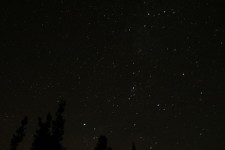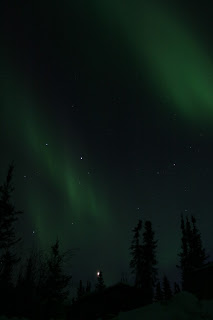One doesn’t forget seeing a comet trail across the night sky for weeks. Many may remember Hale-Bopp visible in 1997 or Halley’s comet in 1986.
Typically, comets visible to the naked eye are seen once every five to ten years. But this year we have two chances. If clouds block the view this month, there will be another chance in November.
Starting early in March, Comet Pan-STARRS (comets are named after the person, spacecraft or telescope that discovered them) became visible in the northern hemisphere. The comet was previously visible in the southern hemisphere. This comet has a narrow window to be seen, which is after sunset and before it goes below the western horizon.
Comet ISON will be visible in November and is predicted to be brighter than comet Pan-STARRS and visible longer at night.
A comet’s brightness depends on its composition and how close it orbits the sun. Like dirty snowballs, comets are composed of ice, dust, rock and gas. The comet’s frozen center is called a nucleus and often is only a few kilometers across.
As a comet orbits closer to the sun, the sun’s heat causes the ice to change to gas. The closer the comet is to the sun, the faster the ice vaporizes.
The vaporized gas creates an atmosphere, called a coma, around the comet’s nucleus. The coma can be hundreds to thousands of kilometers in diameter.
Solar wind and pressure from sunlight blows the coma materials away from the sun, forming a long tail. The tail always points away from the sun.
Comets actually have two tails–a gas tail and a dust tail. The gas tail is the visible coma. The dust tail often is too dark to see.
As the surface of the nucleus heats up closer to the sun, small particles of rock are released and form the dust tail.
Comet ISON is predicted to have an extremely bright tail because this may be the first time the comet has entered the inner solar system and passed closely to the sun.
Comet ISON is believed to have originated in the Oort Cloud. The Oort Cloud is 465 trillion miles away at the edge of our solar system, about one light-year away, and contains several trillion icy bodies.
An icy body becomes a comet when it is nudged from its orbit at the edge of the solar system and falls into an eccentric orbit closer to the sun. The nudging can occur from a giant molecular cloud, stars passing nearby or tidal interactions with the Milky Way’s disc.
Comets originating from the Oort Could are called long-period (or long-term) comets because they have orbits that are longer than 200 years. Some long-period comets may take thousands to millions of years to complete one orbit. These comets, such as comet ISON or Pan-STARRS, will only be seen once in recorded history. Hale-Bopp has a orbital period of 2,537 years.
Comets with orbits less than 200 years are called short-period comets, such as Halley’s comet which completes an orbit about every 76 years. Many short-period comets originate in the Kuiper Belt, which is a disc-shaped region beyond the orbit of Neptune. Pluto is a member of the Kuiper Belt.
The nudge that puts an icy body into an eccentric orbit around the sun allows us to see something from deep space. Comets are considered leftovers from when the solar system was created around 4.6 billion years ago.
If the weather cooperates, two icy bodies formed billions of years ago that have traveled trillions of miles over thousands of years will grace our night-time skies for a once-in-a-lifetime view this year.
 |
| Illustration credit NASA |




